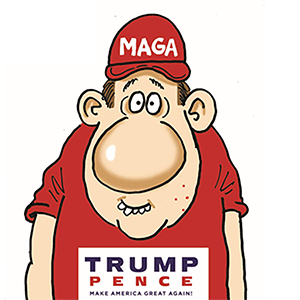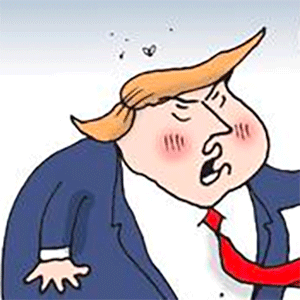Kristian Winfield: Pacers, Thunder showing Knicks how to build championship roster
Published in Basketball
NEW YORK — If the Knicks front office is watching the NBA Finals — and they are — they’re seeing more than just two teams chasing a title. They’re seeing the new blueprint.
The Indiana Pacers and Oklahoma City Thunder aren’t just deep, young and fearless — they’re built for the long haul, structured to survive the wear and tear of 82 games plus 16 playoff wins. And as the Knicks wade through the most consequential offseason of the 21st century, those two franchises offer a clear model for sustained contention.
Leon Rose and his team face dual pressure points. They need to find a head coach who can elevate a group fresh off its second straight 50-win season and a trip to the Eastern Conference finals. And they need to retool the roster around that coach — not just for the grind ahead, but for the kind of longevity it takes to hoist the Larry O’Brien trophy.
Both areas fell short this year.
Tom Thibodeau didn’t trust his bench until it was too late. The front office, in turn, didn’t give him enough second-unit scoring, size, or a true backup point guard behind Jalen Brunson. The result? A worn-down team that ran out of gas in a track meet against the Pacers.
Yes, winning 50 games in back-to-back seasons is an achievement. The Knicks could make it three in a row next year — something they haven’t done since 1995. But 50 wins don’t raise banners — they raise celebratory street signs. And No. 1 seeds don’t make history. Champions do.
If the Knicks want to keep pace with the league’s rising contenders, they need to replicate the foresight and flexibility fueling Indiana and OKC
———
Andrew Nembhard put it plainly.
A year after the Pacers wore the Knicks down in the second round, they did it again — this time in the conference finals — to punch their ticket to the championship round. The Knicks had the bigger names: All-Star starters, elite 3-and-D wings, rim protection and defensive playmaking. But Indiana won in two areas: bench and coaching.
The Pacers built smart. They drafted well, swung on Tyrese Haliburton and Pascal Siakam, and hired a coach who stretched his rotation in the regular season so his reserves could survive — even thrive — under playoff pressure.
“Depth is key at this point,” Nembhard said on June 18 at NBA Finals media day. “A fresh guy is better than a guy that’s maybe a better guy that’s a little bit tired.”
Case in point: Nembhard was the 31st pick in 2022. Ben Sheppard went 26th in 2023. Johnny Furphy, this year’s No. 35 pick, is already on standby for Haliburton (hamstring). T.J. McConnell? Undrafted in 2015. All have played real minutes in real moments.
And it’s not just Indiana. Look at OKC.
Isaiah Joe was cut by the Sixers. Now he’s a core bench piece for the Thunder — re-signed to a four-year deal after OKC built him into what Philly couldn’t. Aaron Wiggins was the 55th pick in 2021. He averaged a career-high 12 points on 49/39 splits and has five double-digit playoff games. He dropped 19 off the bench in a January win over the Knicks.
Then there’s Luguentz Dort. Undrafted. Now a Defensive Play of the Year candidate who shoots nearly 40% from three and guards 1-through-5 like it’s his birthright.
This is the value of coaches like Rick Carlisle and Mark Daigneault, who develop role players — and don’t just ride stars.
And that’s what the next Knicks coach must bring. Because after trading for Karl-Anthony Towns and Mikal Bridges, New York no longer has draft capital to spare. Nor do they have cap flexibility to chase upgrades in free agency.
The financial reality is sobering: Towns ($53M), Anunoby ($39.6M), Brunson ($34.9M), Bridges ($24.9M), Josh Hart ($19.5M), Mitchell Robinson ($13M). That’s $185M tied up in six players, before factoring in Miles McBride, Pacome Dadiet, Tyler Kolek and the player options on P.J. Tucker and Ariel Hukporti. Altogether, the projected payroll hovers near $200M — just $8.3M below the second apron.
So how can the Knicks improve the roster? They don’t own their own first (traded for Bridges) or second-round (rescinded for tampering: Brunson) picks in the 2025 NBA Draft, but they do control pick No. 50 via Memphis by way of OKC. They don’t have cap space to sign free agents, but they can exceed the cap using the mid-level exception ($5.65M) or a veteran’s minimum contract. They can also re-sign their own free agents: Delon Wright, Landry Shamet, Kevin McCullar Jr., MarJon Beauchamp and Anton Watson all fall into that category.
Wright and Shamet could be low-cost, high-upside returns for a coach willing to trust his bench early and often. McCullar and Beauchamp could be intriguing adds — if the Knicks are serious about developing and empowering the young players at the end of the bench.
Even bringing just those four players back would push the Knicks over the second apron, which is why any external improvement will require creative maneuvering. A Hart salary dump could clear space, but at what cost to the locker room? Packaging Anunoby’s max deal for multiple rotation players is another option — but his defensive impact is undeniable. Moving Towns or Brunson alters the team’s identity. And if Towns stays, the Knicks need Robinson. Without him, the defense collapses.
Which is why all eyes are on Indiana and OKC — two teams that built contenders by trusting coaches who trust their benches.
Because one day, it might be Dadiet, Kolek, Hukporti, McCullar, or even unnamed pick No. 50 who swings a playoff game. Or a series. Or a championship.
And whoever the Knicks hire to fill Thibodeau’s shoes needs to be ready to bring that player to life.
____
©2025 New York Daily News. Visit nydailynews.com. Distributed by Tribune Content Agency, LLC.






Comments